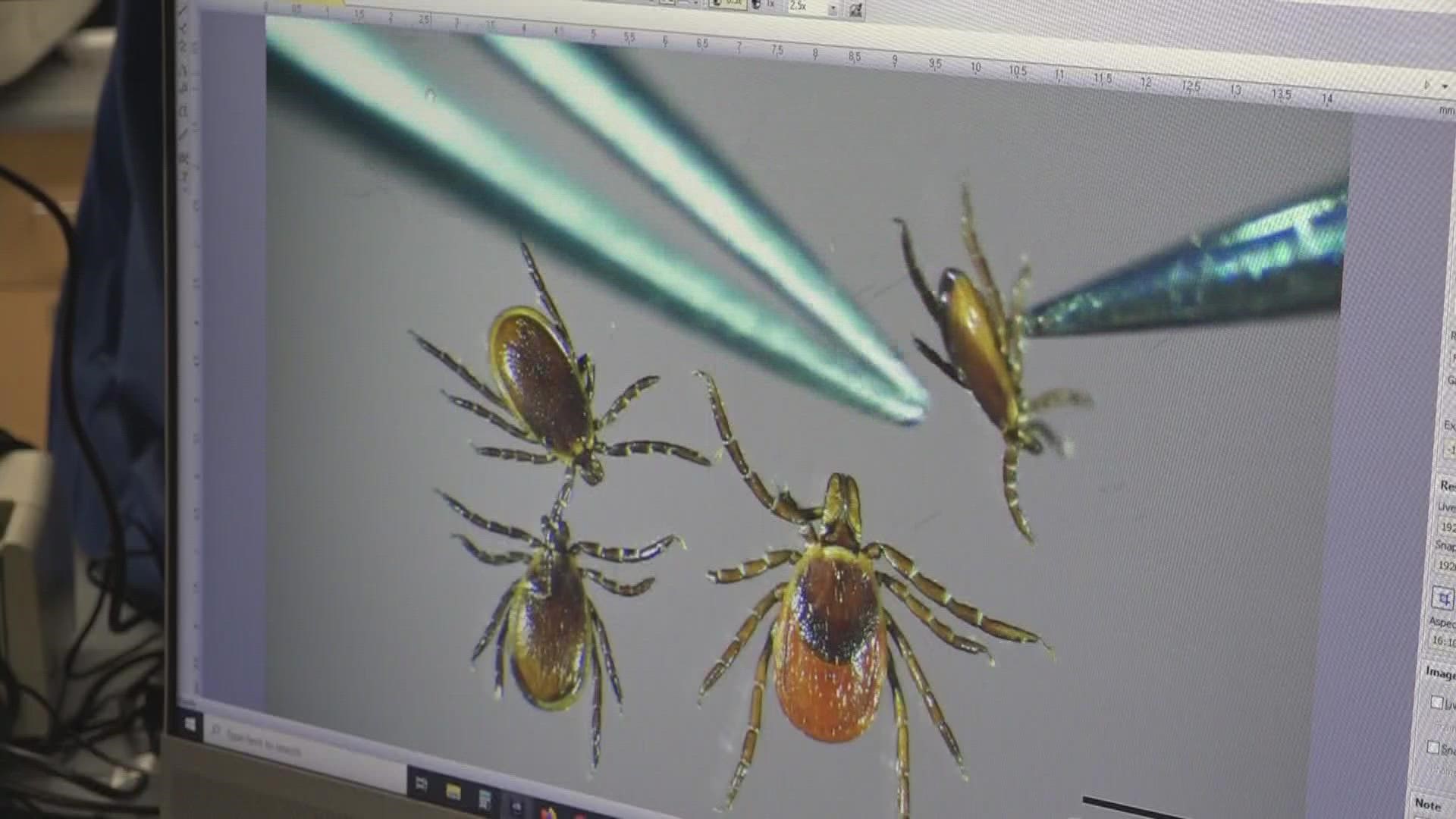NORTH YARMOUTH, Maine — As temperatures continue to climb, more people are heading outdoors to enjoy Maine's many parks, campgrounds, and outdoor spaces.
But it's also a time when young deer ticks, known as nymphs, are emerging. Appearing as tiny black dots, nymph ticks often go undetected and are more likely to transmit Lyme and other diseases than at any other stage, according to the U.S. Centers For Disease Control and Prevention.
Meanwhile, researchers at the University of Maine Cooperative Extension Tick Lab in Orono are seeing an increase in the number of deer tick samples.
So far, they have received 1,350 deer tick submissions in 2022, which is a significant increase compared to the 900 samples they received this time last year. About 60 percent of the ticks submitted to the lab this year have tested positive for Lyme.
Jon Cole owns Northwoods Tick Control. His phone started ringing in early spring, and it has been ringing nonstop lately, as more customers find ticks on themselves and their pets after spending time outside.
"There were customers reporting their dog was coming in with five to six deer ticks on it, which is a lot," Cole said.
Keeping customers safe from ticks hits close to home for Cole, who is also a Lyme disease survivor. He encourages people to snap photos of the ticks they find and send the ticks and the images to the University of Maine Cooperative Extension Tick Lab for testing.
More samples of ticks have been identified as Lone Star ticks, including two found in Northern Maine and Windsor. Just one bite can lead to Alpha-gal syndrome, which can cause severe allergies to red meat.
Griffin Dill, who manages the UMaine Tick Lab, said half of the Lone Star ticks are showing up on pets and people who have traveled out of state. Overall, though, their numbers aren't yet on the rise in our region.
"There hasn't been a real focal point to where they are being found. This leads us to believe there aren't established yet here in the state," Dill said.
But, Dill said, people spending time outdoors need to be on the lookout for nymph ticks, which are at their peak activity. They are extremely tiny, so regular tick checks for you and your pets are crucial.
"They are about the size of a poppy seed and are still able to transmit pathogens. That small size makes them a challenge to find," Dill explained.
Dill said shorter and warmer winters are allowing ticks to emerge early and migrate into northern and western Maine.
As for Cole, he always encourages customers to wear treated clothing, conduct tick checks, and educate themselves about the different species of ticks, especially the ones that can cause serious health problems in pets and people.
"In protecting someone's property, I don't want to give people a false sense of security. The ticks are still out there," Cole said.
For more information on the treatment and prevention of tick-borne diseases, click here.
For real-time data on tick-borne diseases from the Maine Center for Disease Control and Prevention, click here.

